House of Bacchus, building south of the Great Baths (Maison de Bacchus, édifice au sud des Grands Thermes)
Province
Numidia
Numidia (Roman province)(Pleiades)
Province Description
The frontier between Numidia and Mauretania fluctuated during early the African kingdoms. It was fixed at the river of Ampsaga during Caesar’s reign when he rewarded his ally King Bocchus, giving him part of the Numidian kingdom. By 31 BCE, Numidia (also known as Africa Nova) was under direct Roman control, becoming attached to the province of Africa Proconsularis. Toward 194 CE, Septimus Severus detached most of the Numidia territory from the province of Africa Proconsularis, forming a special province governed from Cirta by a procurator, subordinate to the imperial legate. With the Diocletian reforms, the whole of Roman Africa (with exception of Mauretania Tingitana) constituted a single diocese subdivided into six provinces, including Numidia Cirtensis with Cirta as capital.
Location
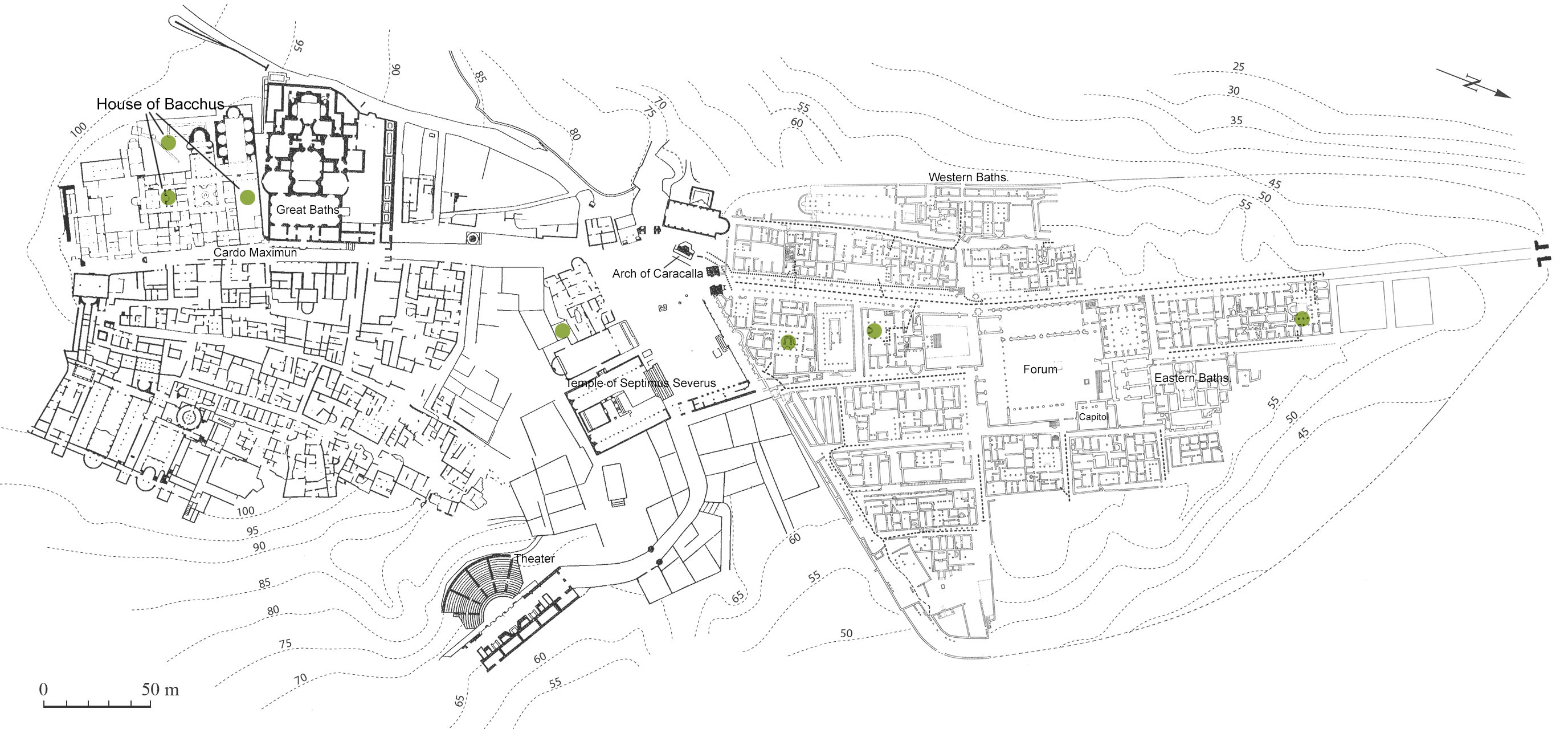
Plan of Cuicul (AOROC, from Février, P.-A., Blanchard-Lemée, M., 2019, fig. 1a)
Location Description
The city of Cuicul, modern Djemila in Algeria, was a Roman colony founded by Trajan at the beginning of the second century. It was located near the western frontier of Numidia, at a crossroads near the High Plain of Setif and quite south of the actual “Little Kabylie” region. The original city center was constructed on a spur set between two merging wadi, the Gergour and the Betame, at an altitude of about eight hundred meters above sea level, surrounded by mountains more than a thousand meters above sea level. There are snow falls and freezing cold in winter and plenty of water. For the most part, the climate exc1udes plants which cannot stand the frost; however, we can infer the presence of olive plantations due to the number of olive presses found throughout the town.
Garden
House of Bacchus, building south of the Great Baths (Maison de Bacchus, édifice au sud des Grands Thermes)
Keywords
- amphorae (storage vessels)
- domus
- mosaics (visual works)
- oeci
- pergolas
- peristyle houses
- piscinae
- statuettes (free-standing sculpture)
- venus
Garden Description
The large block of buildings called the "House of Bacchus", (about 7000 m2) has three separated gardens A, B, C and a peristyle VI. This site has been excavated during four periods (1929, 1931,1937 and 1944).
1-The first garden A is a large open area at the north-east corner of the buildings, along the narrow street which separates it from the Great Baths. It could be overlooked from the portico stretching before the great reception hall with seven apses, constructed in the middle of the fifth century. Earlier (second-third century), people could enter it through a door, two steps of which are still visible under the north wall, in front of an underground door of the Great Baths; this garden belonged then to the public baths dedicated in 193 B. C.. At that time, on the western side of this garden, there were little baths excavated under the seven apses room and contemporaneous with the latter.
2-The main building (Plan view Fig. 1) is composed of two peristyle dwellings, formerly separate, linked up during the Late Empire; the central space of the large one was paved, first with slabs, afterwards with mosaic. The little peristyle (7 m x 10 m) was a garden (B) enclosed by three porticoes, supported by six columns (rough and probably stuccoed) and bordered by a low wall. On the south side, there was a semi-circular pool, the front of which was closed by two stone plates, engraved with lozenges and joined by a cut column. The exedra and the rooms having view into the garden seem to have been devoted to private life, unlike the large one.
3-The rear garden (C) of the "House of Bacchus" seems to have originally belonged to the little baths and then the house with the large peristyle VI (see Plan view in red Fig. 1). It was greatly transformed in Late Antiquity. The great seven apses hall, built in the middle of the fifth century, took the place of the small baths and overwhelmed this space with its impressive volume. The large oecus may be assigned to the Constantinian period: perhaps it had a view over the rear garden at that time. Afterwards, this room was extended with an absidial pool (11 m long); through a wide door, people accessed a little terrace, from where they overlooked the new pool, paved with marble, one meter below. Water arrived from two little pools on each side and went into the drain of the seven apses room. Two little columns bore a small pediment. In the inside edges, we see terracotta amphoras used to raise fish. The inside borders are complete, but the outside masonry is unfinished, so that we may think that the rear wall may have stood high enough to form a nymphaeum. The masonry is similar in the fish pool and in the seven apses (brick tiles joined by brick layers forming crosses) : from that, we infer they were built at the same time, in the middle of the fifth century. The foundation of the fish pool was laid on the bottom of the rectangular one, which perhaps was filled up.
Plans
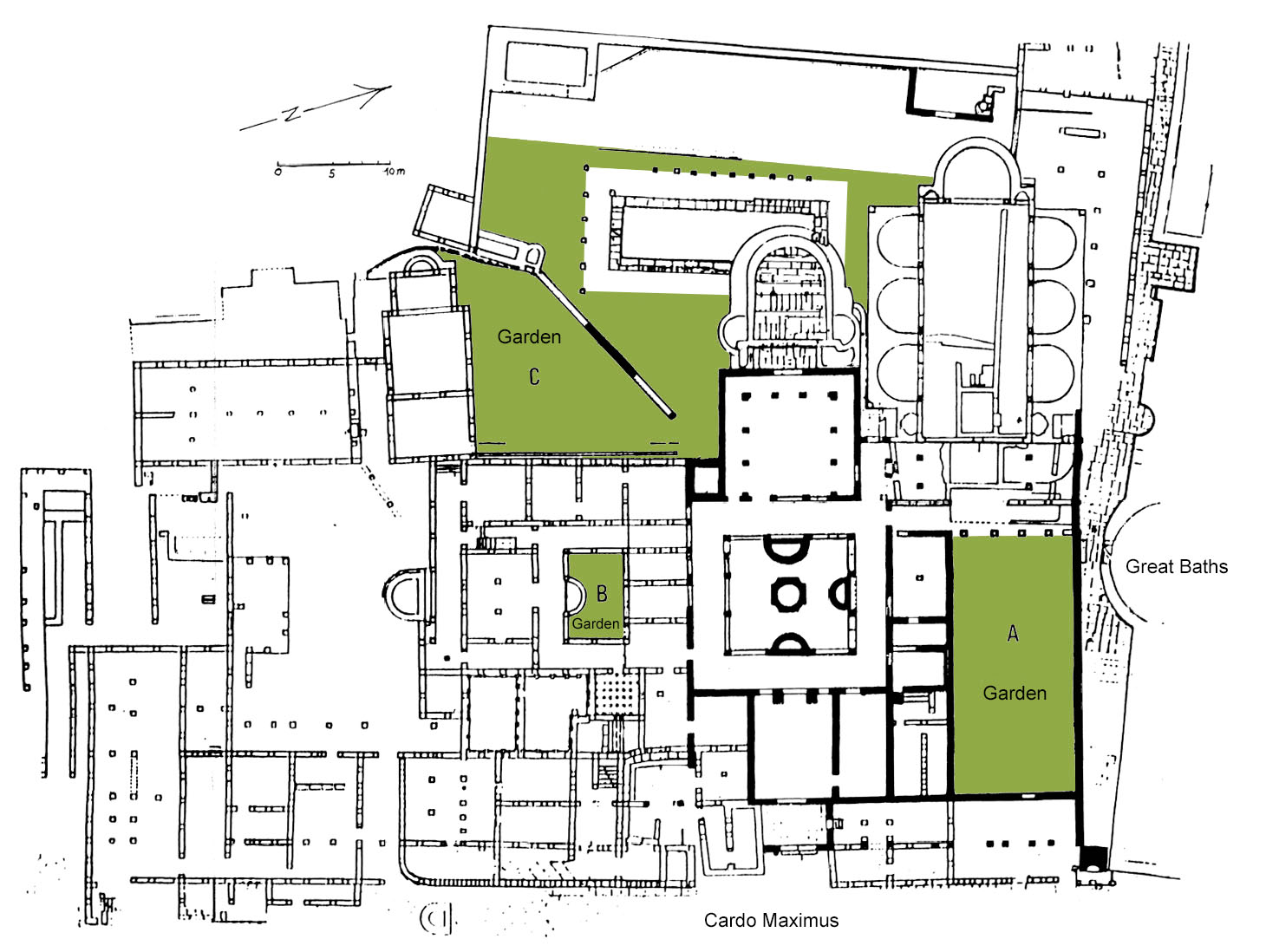
Fig. 1: Plan of the House of Bacchus (Dans les jardins de Djemila, Blanchard-Lemée, M., 1998, p. 194, fig. 9)
Images
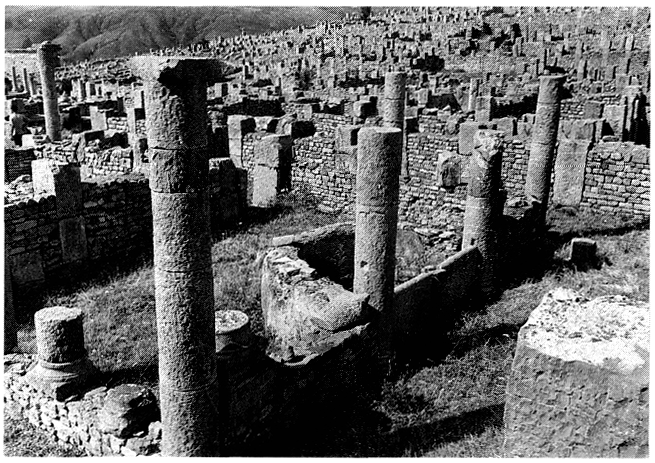
Fig. 2: The small peristyle garden B and its semi circular basin (Février, P.-A. – CCJ 62889))
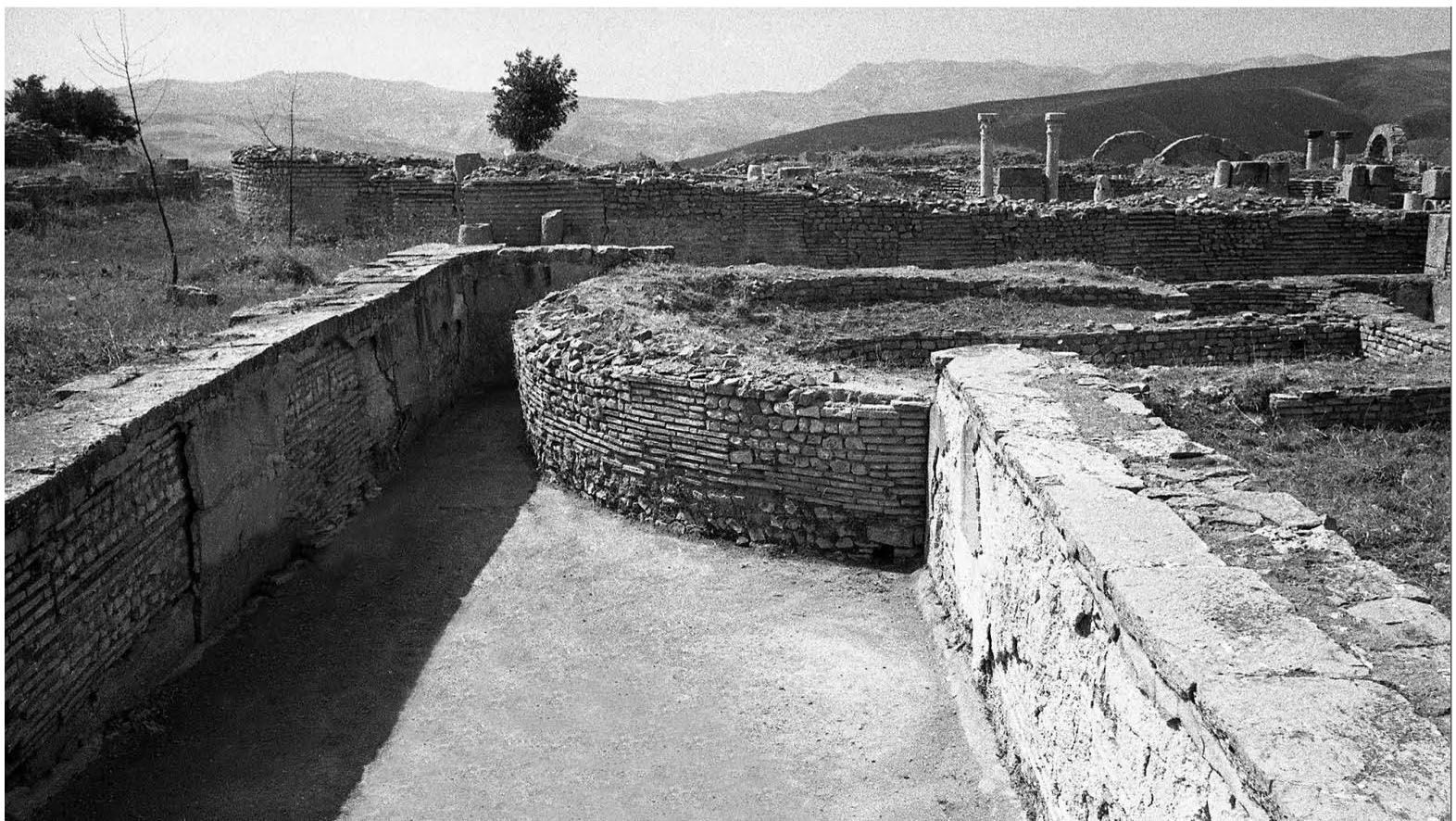
Fig. 3: The pool and fish pool (Février, P.-A.– CCJ 62945)
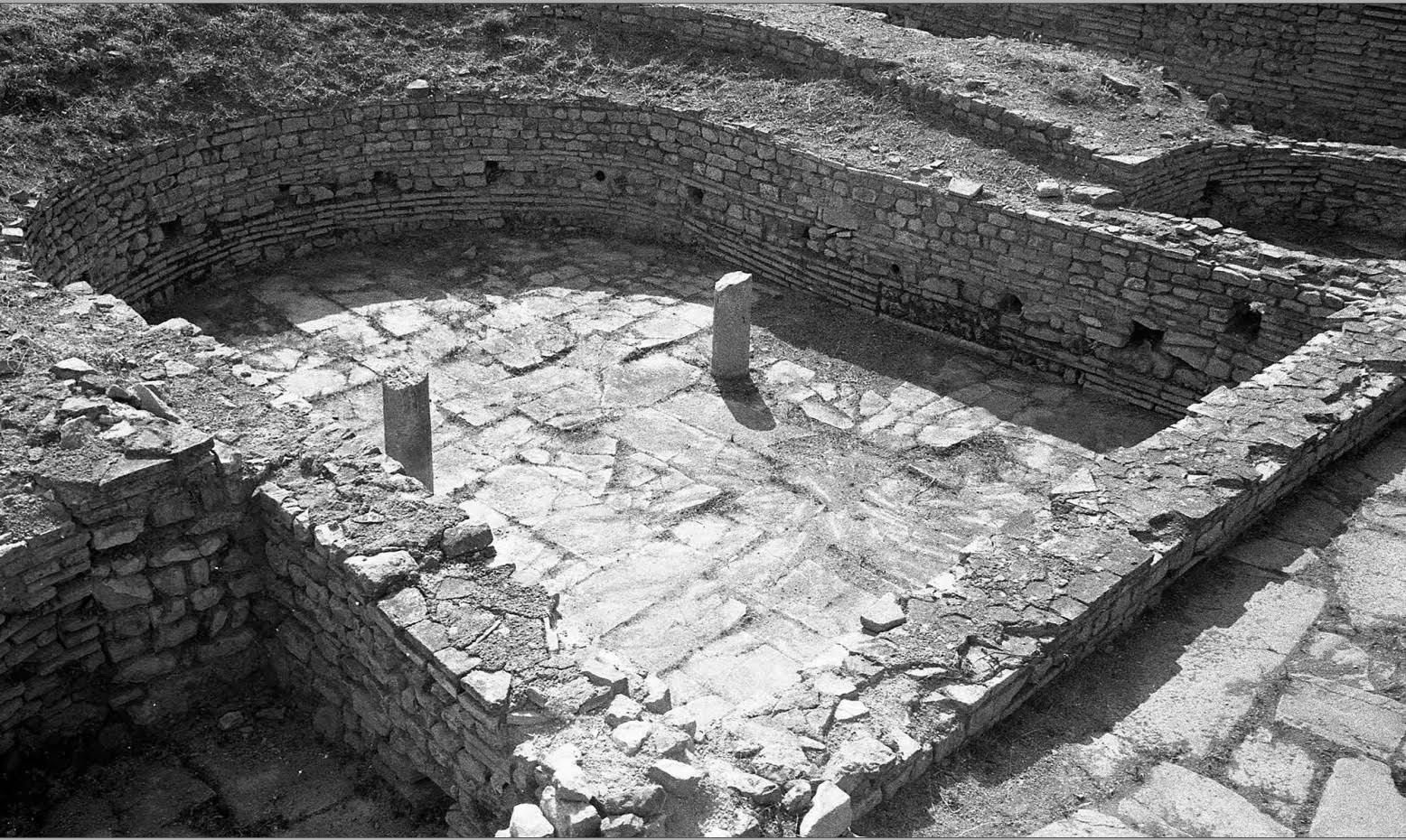
Fig. 4: The fish pool (Février, P.-A.– CCJ 62886)
Dates
3nd-5th century CE
Bibliography
- Blanchard-Lemée, M., "Dans les jardins de Djemila", in Antiquités Africaines, 34, 1998, pp. 185-197, Il fig. (worldcat)
- Blanchard-Lemée, M., "La Maison de Bacchus à Djemila: Architecture et décor d'une grande demeure provinciale à la fin de l'antiquité", in Bulletin archéologique du CTHS., NS, fasc. 17 B (Colloque sur l'archéologie et l'histoire de l'Afrique du Nord, Perpignan, 1981), 1984, pp. 131-143. (worldcat)
- Février, P.-A., Blanchard-Lemée, M., L'édifice appelé "Maison de Bacchus" à Djemila, Études d'antiquités africaines, CNRS Editions, Paris, 2019, SSN 0768-2352. (worldcat)
- Malek, A.-A., "Le jardin au fil de l’eau: mises en scène paysagères dans les domus de Maghreb antique", in L'eau dans les villes du Maghreb et leur territoire à l’époque romaine, eds, V. Brouquier-Reddé et F. Hurlet, Bordeaux, Ausonius, 2018, pp. 248-249. (worldcat)
- Malek, A.-A. "De l’espace pictural à l’espace du jardin : mosaïques et jardins dans les domus de l’Afrique romaine", in Archéologie des jardins: analyse des espaces et méthodes d’approches, Van Ossel, P., Guimier-Sorbets, A.-M. (dir.), Archéologie et histoire romaine 26, Editions Monique Mergoil, 2014, p. 20. (worldcat)
Pleiades ID
TGN ID
Contributor
Publication date
21 Apr 2021